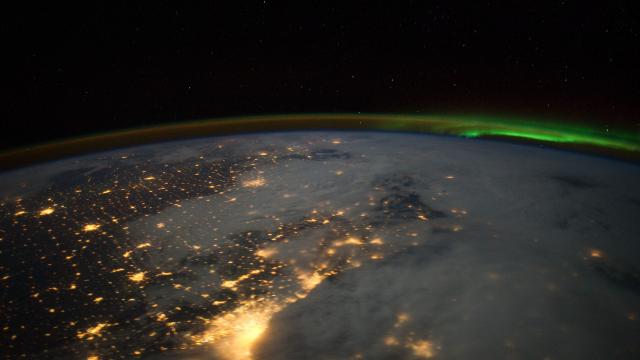The recovery of the ozone hole has been a quintessential environmental success story, as the world has worked largely in harmony for decades to phase out ozone-depleting chemicals. So last year’s discovery that emissions of CFC-11, one of those banned chemicals, was suddenly reversing course came as a shock.
Now, scientists have pinpointed the primary source of the rogue emissions. The finding, published in Nature on Thursday, shows that eastern China is responsible for upwards of 60 per cent of the recent rise in CFC-11 emissions. The results could help Chinese authorities suss out the exact sources and stop the emissions before they deal a major setback to ozone hole recovery.
The world has been on track to clean up the ozone hole problem by the 2060s thanks in large part to cooperation under the Montreal Protocol. That international treaty went into effect in 1989 with nations agreeing to reduce ozone-depleting chemicals, many of which are involved in industrial processes. CFC-11 is one of those chemicals, which is used in refrigeration and the production of foams, and emissions of the chemical have been declining for decades thanks to the phase-out and efforts to gather up any remaining materials made with it and bank them for destruction. But in 2012, the decline in emissions started to slow, meaning that there was a rogue source producing the chemical or at least emitting it.
“The study last year used data from a remote, clean environment in Hawaii,” Matt Rigby, the new study’s lead author and University of Bristol atmospheric scientist, told Earther. “That allows you to work out the global changes in emissions.”
Rigby and other scientists working on the issue had a hunch China might be the source of rogue emissions, but they couldn’t tease that out from the Hawaii dataset alone. So they turned to air monitoring stations in Japan and Korea for the new study and weather modelling. The findings show that China’s CFC-11 emissions went from an average of 6.4 gigagrams per year from 2008-12 all the way to 13.4 gigagrams a year between 2014 and 2017. The weather modelling helped further pinpoint the results to show that northeast China is the source of the emissions, though the method doesn’t allow for pinpointing specific factories as the guilty parties.
The country has said it plans to crack down on the source of the emissions as part of its commitment to the Montreal Protocol, and the findings provide a clearer roadmap for where it can look for the excess emissions.
“The new analysis narrows the options on sources and locations, providing stronger evidence that the emissions are from new production (not banks for example) and from Eastern China, and this should put more pressure on China to investigate and curtail any rogue production,” Durwood Zaelke, the president of the Institute for Governance and Sustainable Development, told Earther in an email.
The results also point to the value of air quality monitoring. Without the local measurements, we would never know northeast China was the source of the CFC-11 emissions.
“We can only really see a few hundred kilometers from measurement stations,” Rigby said. “With the infrastructure we’ve got, we can do this analysis in North America, parts of Europe, and a small part of eastern Asia.”
There are clearly other sources of rogue emissions, and increasing the network of monitoring stations will be a way to keep on top of those emissions now and into the future to ensure CFC-11 continues to be phased out. Doing so will offer a number of benefits. The first is the ozone hole thing. Rigby said that the new emissions themselves are modest, but if they “continue at current levels, we’re potentially looking at delays or years or a decade” for the ozone hole to shrink back to early 1980s levels. CFC-11 is also a potent greenhouse gas that has roughly 5,000 times the warming potential of carbon dioxide. Rigby said the uptick in northeastern China emissions have the same impact on the climate as all of London’s carbon emissions.
Then there’s the whole symbolic thing. The Montreal Protocol is the big kahuna of environmental success stories. In a time when everything feels like it’s unravelling, letting the treaty fail would set a dangerous precedent.
